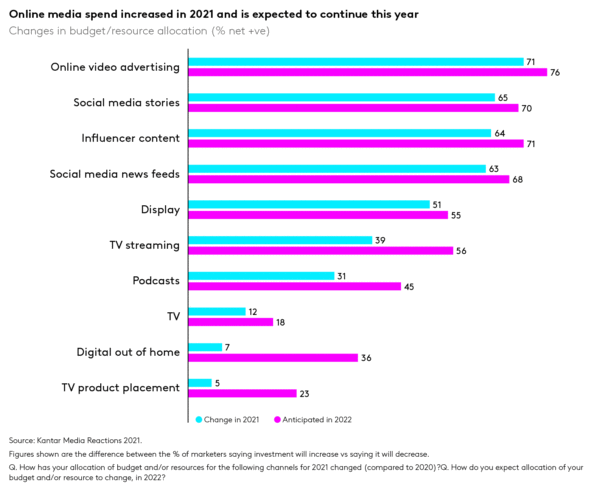Performance media and marketing: An expanding playground for brands [REPORT]
January 26, 2022

The pandemic witnessed many brands turning to performance-based strategies to survive, but after stunning growth comes a host of challenges – in worlds both real and invented.
COVID-19 has significantly accelerated our development and use of technology over the past 18 months, largely fueled by advertisers’ efforts to evolve their ecommerce offerings and meet the needs of consumers under stay-at-home orders.
Now used to the speed and efficiency that technology brings, many of these behaviours are likely to stick as society opens up again, although perhaps not at quite the same levels as early on in the pandemic.
Longer term, however, we’d expect the growth to stabilize as performance media finds its rightful share of marketing and advertising dollars. To that end, expect performance media and brand-building media to settle into a more optimal mix over the coming years.
Can performance media work optimally with brand-building media?
While performance media will be unlikely to influence a major purchase decision on its own, it works incredibly well for short-term impulse purchases – and brands can leverage these moments to build long-term brand value.
Conversely, if a consumer is already positively predisposed to a product from traditional advertising, they might be more inclined to make the transaction when exposed to performance media online. It’s a mutually beneficial relationship, but only more recently have we seen them work as such complementary disciplines.

Could this impact cross-media campaign measurement?
The media and marketing ecosystem is growing in complexity. Consequently, there’s been an urgent need to find a cross-media measurement solution that allows the industry to understand how the many touchpoints interact with each other, and what the optimal mix to reach consumers looks like.
While reach and frequency continue to play a critical role, the launch of advertiser-led initiatives like Project Origin in the UK (for which Kantar is the preferred panel supplier) reinforces the need for people-based measurement, and brings performance and brand-building media ever closer together.
We’ve been working to ensure our products can support the increasing media tech stack using existing tags, meters and direct integrations. The next task is to harmonize in a consistent manner – a significant challenge in terms of identifying key client requirements as well as the methodological feasibility of data collection, integration, privacy and consistency.
However, Kantar is unique in being able to deliver all the components of the WFA ‘North Star’ framework 36 requirements from the top to the bottom of the funnel and will continue to support clients and the industry in their endeavours.
The role that data will play in the growth evolution of performance media
We leave a crumb of data every time we do something online, and that data is increasingly helping platforms and brands to better understand their consumers and how to reach them in the virtual space.
With the depreciation of third-party cookies on the horizon and the challenges in getting a single view across all platforms, the way brands use data to influence performance media strategies will become even more critical as they seek to better connect their products to consumers’ needs in a privacy-first era.
The metaverse is gaining traction in some markets, and could have big implications for performance channels
If the metaverse lives up to the hype – and in countries such as Brazil it’s certainly attracting interest at a consumer and brand investment level – we’ll need to understand the size and composition of an entirely new audience segment and develop tools that allow brands to measure their reach and effectiveness, similarly to TV and display advertising.
Putting the interactions in the metaverse as a component, and in the context of overall media, is something that advertisers will demand, and something Kantar will be ready for.
To download report, CLICK HERE.




























